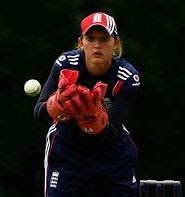To me, Darts was no more than a
temporary time-filler in January when Eric Bristow, Jocky Wilson, John Lowe et
al would chuck their ‘arrers’ for the world championship. While I could
appreciate the incredible precision and mental subtraction skills required, I
would soon tire of the clearly limited entertainment value. The caller’s cry of
“One hundred and eigh-ty!” and Sid Waddell’s turn of phrase would occasionally
raise a smile, but that was as far as it went.
Snooker was a different kettle of
fish. Like many of my generation my first experience of it came courtesy of
BBC2’s Pot Black programme.
Introduced to exploit the wonder of colour television in 1969, the half-hour,
single-frame show brought a bunch of middle-aged blokes in waistcoats into my
living room: hardly a reason for me to stay up until 9.30 on what was probably
a Friday evening. To make matters worse, for its first five years we would have
seen it in black and white!
I’m not sure when Pot Black became more of an appointment
to view for Dad and me but I did come to enjoy watching the likes of Fred
Davis, Rex Williams, John Spencer, Ray Reardon and Eddie Charlton amble creakingly around a
table, despatching the different coloured balls into pockets. With Alan Weeks
presenting and ‘whispering’ Ted Lowe on the microphone, it all had an air of
wistful nostalgia for an era when snooker was just an uppity son of billiards
appealing to men like my Grandad. Of course I’d never been near a snooker
hall. Back then even the humble pub was a smoke-filled no-go zone for women or
children, so even a pool table was an object beyond my ken.
It wasn’t until the late Seventies
that the Beeb began extensive coverage of the world championship and the first
I recall with any clarity was the 1979 triumph of outsider Terry Griffiths. It was probably because the
calm, cautious son of Llanelli was such an outsider that this event stood out.
Pretty soon, the old fogeys were
being supplanted by a bunch of young whippersnappers like Steve Davis, Tony
Knowles and Canada’s Kirk Stevens. But the big favourite amongst the younger
crowd was undoubtedly Alex ‘Hurricane’ Higgins. He’d already been a world
champion, but in 1972 few of us knew about it. Then in 1980, I was amongst a
throng of undergraduates cheering him on in a tense final against the
notoriously slow Cliff Thorburn, a clash of chalk and cheese if ever there was
one. It was a crushing disappointment when the Canadian edged the final 18-16
which had been so rudely interrupted by live coverage of the SAS storming the
Iranian Embassy.
I warmed to Thorburn three years
later when he became the first man to achieve a maximum break on live
television. I particularly remember the warm fuzzy feeling of sporting
friendship upon seeing his fellow Canadian Bill Werbeniuk peeping around the
screen dividing Thorburn’s table and his purely to watch what he hoped would be
the groundbreaking 147.
But Higgins’ greatest day came in
1982. Much to my grandad’s disgust, the chain-smoking Northern Irishman, who
controversially had special dispensation not to wear the obligatory bow tie,
overcame Ray Reardon 18-16. Tearfully calling for his young baby, he declared
himself the ‘People’s Champion’ and much of the nation
gorged itself on the emotion. Yet for all his undoubted charisma, Higgins often
let his drug- and drink-fuelled demons get the better of him, both at and away
from the snooker table. Even I tired of his frequent indiscretions and
consequent bans and inevitably he smoked and drank himself to death, albeit
somehow surviving to the age of 61.
For all the Hurricane’s headlines,
the Eighties belonged to someone completely different. Londoner Steve Davis had
been storming up the rankings before grabbing the 1981 world title. He reached seven successive world finals,
winning five, along with success in other televised tournaments like the UK
Championship and Masters. The complete antithesis of Higgins, with his
impassive expression and smart appearance he was more the ‘Granny’s Champion’.
My Nanna was a huge fan. As her youngest son and only grandson (yours truly)
were fellow redheads. I’d hazard a guess Steve’s appeal lay less in his potting
ability than his neat ginger hair.
One final he didn’t win was, of
course, the climax to the 1985 World Championship. From 8-0 up, Davis allowed
the jovial Dennis Taylor - wearing his trademark 'upside-down' glasses - back into the contest and on the Sunday evening Dad
and I were enthralled as the Northern Irishman fought back. At 15-17, with work
the next morning, I finally threw in the towel and retired to bed. Taylor was
made of sterner stuff. Way past midnight on BBC2, an astonishing 18.5 million
people (a third of the population) witnessed the incredible black ball finale
and Taylor’s triumph. 18.5 million! And I
wasn’t amongst them! Even I had to feel sorry for Davis. Boosted by a two-day
match with more drama than anything other sports could possibly offer, this marked
the zenith of snooker’s popularity in this country. As for Taylor, Nanna never forgave him...

